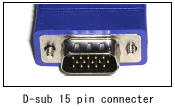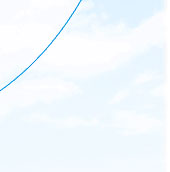|
|
|||||||||||||
| Submission period: | ||
Open: |
December 4th (Tuesday), 2007 at 9:00am (JST: GMT+9) |
|
| Note that abstract submission is closed earlier than that of advance registration (May 15th, 2008) | ||
Submissions of abstracts are made via online only. Complete your advance registration before abstract submission. Click “Advance Registration & Abstract Submission” button (either the one in this page or that in the Registration page) and follow explanation in the screens.
Advance Registration & Abstract Submission
If the submission process is not completed, please click the "Modify, Update, Delete Abstract" button, and login to restart the procedure. Please note that "User ID" and "Password" issued at the time of the registration will be required. Once you have completed the registration, you will be taken to the Abstract submission page (UMIN System.) Please follow the instruction and submit the abstract.
for General Submission
Modify, Updata, Delete Abstractfor Travel Award
Modify, Updata, Delete Abstract
Requirements:
The first/presenting author must be a member of the Japan Neuroscience Society (JNS). Those who are currently applying for a membership choose “applying” and leave it blank in membership number box.
Online registration is required for nonmember symposium speakers also. Symposium organizers are expected to notify them of this necessity. Nonmember symposium speakers should select “nonmember symposium speaker” and leave the membership number box blank.
A first/presenting author is considered as a presenting author.
One may submit only one abstract as first/presenting author including a symposium presentation.
Language:
Abstracts must be written in English.
Presentation of papers at the meeting
The author can indicate preference for either oral or poster presentation at the time of abstract submission. However, the final decision of presentation style is made by the Program Committee, and your understanding and corporation are highly appreciated.
Details of presentation styles are available on our website.
As a new trial, we may ask some oral presentations to merge into the related symposia. We will consult with the presenters respectively when the program is organized.
1.Oral presentation
Oral presentation can be made either in English or Japanese, but English is strongly recommended in order to promote the internationalization of the Meeting. In order to avoid multi-language use in the same sessions, choice of language has to be made at abstract submission.
The time allocated for general oral presentation is 15 minutes. (It is subject to change depending on the number of presentations.)
Only PC projectors are provided.
 Bring your own PC for presentation. If your PC is not compatible with D-sub 15 pin connecter, please bring your own adaptor.
Bring your own PC for presentation. If your PC is not compatible with D-sub 15 pin connecter, please bring your own adaptor.
2.Poster presentation
Posters will be made in English, and you may add a summary in Japanese.
Poster size will be announced later.
3.Submission procedures
Abstracts are written in English only.
Enter the registration system from the page of “call for papers”, advance to the UMIN abstract submission system, and follow the instructions.
Please read the following explanation carefully before you submit online. You must enter “Type of presentation,” “Category,” “Authors (within 15 authors including the first/presenting),” “Institution (within 10),” “Contact address,” “E-mail address,” “Title of abstract,” “The abstract body,” “Research funds,” “Language,” “Concerning PRESS RELEASE,” and “About the conflict of interest.” All entries have to be within the designated numbers of characters and names.
Any submitted abstracts will not be edited or proof-read before printing. The first/presenting authors are responsible for his/her abstract.
Once submission is completed, you will automatically receive an e-mail from the UMIN Center confirming receipt of your submission. If you do not receive this e-mail within 60 minutes after submission, your submission might have failed. Please confirm with the Congress secretariat and resubmit your presentation.
Notification of acceptance/rejection
The Program Committee will make a final decision of acceptance/rejection. A notification of acceptance/rejection and the date, style and location of your presentation, etc., will be sent to you by email in mid March. Please keep your registration number.
Notes
Abstract Registration Numbers are generated automatically when an abstract is submitted. During the submission period, you may edit your abstract with this registration number and the password that you create at submission. For security purposes, UMIN and Congress Secretariat will not answer any questions related to the registration numbers and passwords.
Submitted abstracts will not be edited or proof-read before printing. The first/presenting authors are responsible for his/her abstract.
After the submission period, change of abstract and addition and/or change of authors cannot be made. Please make sure all authors are entered.
The first/presenting author is responsible for getting agreements from co-authors before submission.
The UMIN system is compatible only with the browsers of Internet Explorer 4.0 or above, and Netscape 4.0 or above. Please use either one of these browsers.
Data Entries
Enter the name of the first/presenting author, institution, contact number, e-mail address and Membership ID number.
Enter names of co-authors, institutions, and institution numbers.
Choose “Category.”
Use a full block style (not leaving a space at the beginning of the first line) when you fill in “Abstract Body.” The maximum number of characters is 1,300 including the names of authors, institutions, the title and body, institutions and Research funds. After all required fields are filled in, click “Next” so that you can confirm the number of characters you entered.
<Creating a new paragraph>
- The browser you use may show a long-wide space for abstract body. If you find it inconvenient, you may use “Enter” or “Return” to make a new paragraph. These paragraphs will be erased automatically when the registration is completed.
- If your abstract body has multiple paragraphs, enter <BR> when you start a new paragraph. Then, the paragraph stays even after the registration is completed.
(Example) GDNF promoted the survival of dopaminergic neurons in vitro.
 GDNF promoted the survival <BR> of dopaminergic neurons in vitro.
GDNF promoted the survival <BR> of dopaminergic neurons in vitro.
 GDNF promoted the survival
GDNF promoted the survival of dopaminergic neurons in vitro.
of dopaminergic neurons in vitro.
<Entering symbols, Greek Letters and other special characters>
- Symbols and Greek Letters shown below have to be entered using the respective codes from the list of “Abstract Body” on registration site. (You may cut and paste from the list.)
ΑΒΓΔΕΖΗΘΙΚΛΜΝΞΟΠΡΣΤΥΦΧΨΩ
- Follow the instructions below for special characters. These are also available on the registration site for you to cut and paste.
- Superscripts:<SUP></SUP>
Example:Na<SUP>+</SUP>=Na+ - Subscripts: <SUB></SUB>
Example:H<SUB>2</SUB>O=H2O - Italics: <I></I>
Example:<c-fos>=c-fos - Bold : <B></B>
Example:<B>AAA</B>=AAA - Underline : <U></U>
Example:<U>BBB</U>=BBB
[Note]
If you want to use “<” or “>” in your abstract (e.g. p<0.05), in order to distinguish special character codes “< >” explained above from simple uses of “<” or “>”, please enter the codes of “>” for “ >” and “<” for ”<”.
Example: p<0.05=p<0.05
For inquiries about registration and abstract submission:
Neuroscience2008 Secretariat
c/o Congress Corporation
6F, 5-1 Kojimachi, Chiyoda-ku,
Tokyo 102-8481 JAPAN
TEL: +81-3-5216-5318 FAX: +81-3-5216-5552
Email: neurosci2008@congre.co.jp
List of Categories
- Ion Channels and Excitable Membranes
- Synapse
- Synaptic Plasticity
- Neurotransmitters and Modulators
- Receptors and Transporters
- Signal Transduction and Modulation
- Axonal Transport, Cell Motility and Cytoskeleton
- Glia and Glia-Neuron Interaction
- Blood-Brain Barrier
- Gene Regulation, Epigenetics, Genome Informatics
- Regulation and Function of RNA, Translational Regulation
- Drug Development
- Neural Induction, Pattern Formation, Evolution
- Neural Stem/Progenitor Cells and Cellular Differentiation, Transplantation
- Embryonic Stem cells
- Migration, Axonal and Dendritic Outgrowth, Network Formation
- Tropic Factors and Cytokines
- Cell Adhesion Molecules
- Regeneration
- Neuronal Death and Apoptosis
- Neural Repair and Rehabilitation
- Adult Neurogenesis
- Somatomotor System
- Oculomotor System
- Visual System
- Auditory and Vestibular System
- Olfaction, Taste and Chemical Senses
- Somatosensory System
- Viscerosensory System
- Sensori-Motor Plasticity
- BMI/BCI
- Robotics
- Autonomic Nervous System
- Neuroendocrine System
- Neuroimmunology
- Stress
- Reproduction
- Regulation of Food Intake
- Instinct and Emotional Behavior
- Sleep and Biological Rhythms
- Learning and Memory
- Learning Theory
- Cognition
- Development and Aging of Cognition
- Language and Communication
- Social Behavior
- Alzheimer's Disease, Other Dementia, Aging
- Parkinson's Disease and Related Disorders
- Polyglutamine Diseases, ALS, Other Neurodegenerative Disorders
- Neuromuscular Diseases
- Demyelinating Disorders
- Neurotoxicity and Inflammation
- Epilepsy
- Schizophrenia
- Mood Disorders
- Addiction and Abuse
- Developmental Disorders
- Other Psychiatric Disorders
- Pain
- Ischemia
- Trauma
- Neuro-oncology
- Behavioral Pharmacology
- Animal Models
- Imaging
- Molecular and Cellular Biological Techniques
- Neuroinformatics
- Neuroethics
- Others




